I would like to create a prediction model from a time series. I have a data frame which include 2 column (Date and Cases). Date column is going from 2008-01-01 to 2013-12-01. Cases has some number for each month (However, more than 30 out of 72 observation has value of NA.) As result, I want to create a prediction model to predict Cases in the next 3-4 month after 2013-12-01? Can anyone help me?
Here is output of dput(my data)
structure(list(Date2 = structure(c(13879, 13910, 13939, 13970,
14000, 14031, 14061, 14092, 14123, 14153, 14184, 14214, 14245,
14276, 14304, 14335, 14365, 14396, 14426, 14457, 14488, 14518,
14549, 14579, 14610, 14641, 14669, 14700, 14730, 14761, 14791,
14822, 14853, 14883, 14914, 14944, 14975, 15006, 15034, 15065,
15095, 15126, 15156, 15187, 15218, 15248, 15279, 15309, 15340,
15371, 15400, 15431, 15461, 15492, 15522, 15553, 15584, 15614,
15645, 15675, 15706, 15737, 15765, 15796, 15826, 15857, 15887,
15918, 15949, 15979, 16010, 16040), class = "Date"), Cases = c(16352L,
NA, NA, NA, NA, NA, NA, NA, NA, NA, 10L, NA, 23L, 138L, NA, 18L,
NA, 3534L, 43L, NA, 3L, 118L, NA, 172L, 4194L, NA, 9L, 2L, 162L,
NA, 112L, 115L, NA, NA, 119L, NA, NA, 172L, NA, 25L, NA, NA,
11L, 4L, 457L, 56L, NA, 148L, 446L, 30L, NA, NA, NA, NA, NA,
NA, NA, 583L, NA, 180L, 193L, NA, 77L, NA, 18L, 15L, NA, NA,
1L, NA, NA, NA)), .Names = c("Date2", "Cases"), row.names = c(NA,
-72L), class = "data.frame")
Thank you in advance for your contribution.
